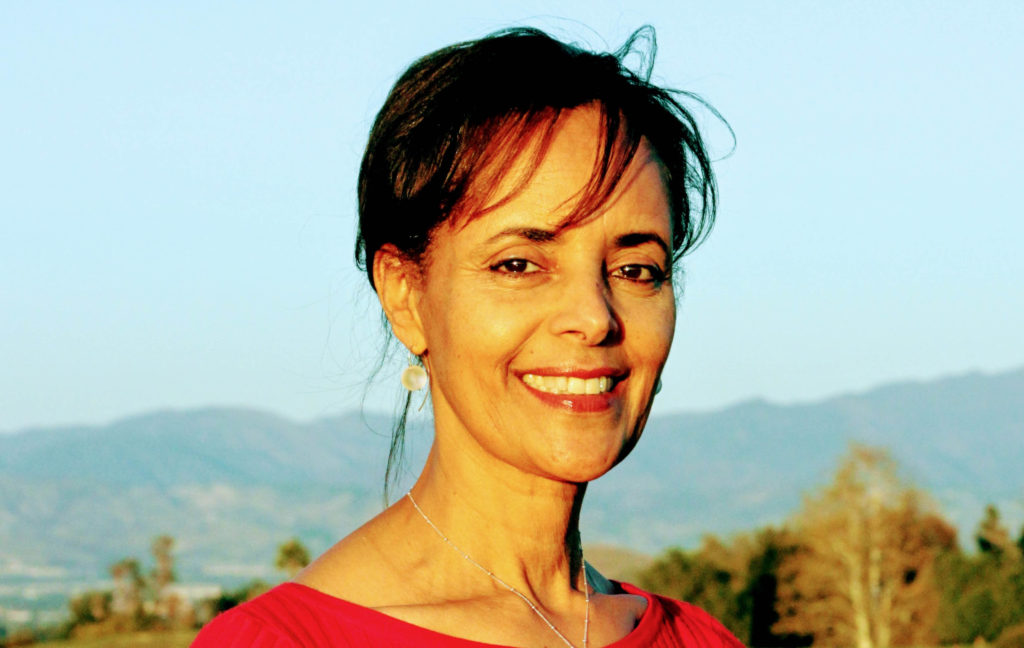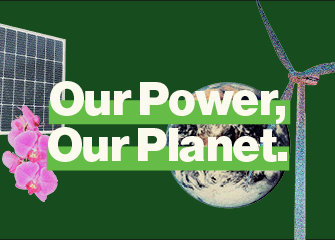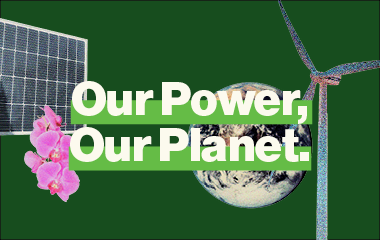March 25, 2024
Views from OC Goes Solar

As Orange County and the rest of California navigate toward a more sustainable future, rooftop and broader residential solar and battery storage will play a big part in providing the needed affordable and reliable clean power. We spoke with Senait Forthal, executive director of OC Goes Solar, a local nonprofit working to help spread the word about the benefits of residential solar to all members of the community. That includes a new partnership with OCPA to promote SOMAH, which is focused on helping ensure multifamily affordable housing properties can benefit as well.
Q: As a non-profit organization, what is the mission of OC Goes Solar for Orange County?
Our mission is simple: make clean energy accessible, equitable, and affordable for all residents, particularly those in low-income and underserved communities. We are committed to democratizing access to clean energy because it shouldn’t be limited to those who can afford to buy solar systems.
That’s where the challenge lies.
By providing simplified, transparent, and useful solar energy education, we aim to lower barriers and increase access to more affordable clean energy in our communities. By empowering individuals with knowledge and resources, we can create a more inclusive and sustainable energy future for everyone.
Q: Why is expanding residential solar use so important in our larger fight against climate change? How does it help to build resiliency and develop our local economies?
Residential solar plays a crucial role in reducing greenhouse gas emissions by generating clean energy locally. Rooftop solar is proven to be the cheapest way to generate clean energy and has the potential to offset huge amounts of emissions while displacing fossil fuel. In addition, local generation of clean energy increases resiliency and reduces the need to expand costly transmission lines.
Locally produced clean energy offers numerous benefits. Rooftop solar could be aggregated to create local microgrids to enhance community resiliency. It could provide readily available energy during fires and other climate-related disasters.
Furthermore, rooftop solar is the most cost-effective method of going solar, it lowers electricity bills for residents but also allows for energy independence. With access to battery storage, excess energy generated during the day can be stored and used in the evening, ensuring backup power for essential functions in households.
Moreover, rooftop solar contributes to the local economy by creating jobs. Installers, often smaller and local contractors, train and employ residents from the area. These jobs are typically well-paying and help support the local workforce and economy. Overall, rooftop solar not only benefits the environment but also strengthens communities.
Q: Where do the biggest gaps in residential solar exist?
The biggest gaps in residential solar predominantly revolve around financial barriers, lack of information, and housing limitations.
- Upfront Costs: Affordability is a significant barrier, as many individuals may not have the capital to pay for solar installations upfront. Even with loans, high interest rates can deter potential adopters.
- Information Accessibility: There’s a need for accessible and reliable information about solar energy. Many people are overwhelmed by what they need to know, the cost, and logistics of solar installations. Reducing this knowledge gap is crucial for increasing solar adoption rates.
- Housing Types: Certain housing types, such as condos or apartments, pose challenges for solar installations. Lack of individual property ownership for apartment residents and the need for collective agreement on roof sharing from condo owners hinder solar adoption in multi-unit dwellings.
- Renters: Renters face a special challenge as they don’t have the authority to make decisions about installing solar panels. Without a roof to own, renters are often excluded from the opportunity to benefit from solar energy.
Q: Demand for residential solar has plummeted since the California Public Utilities Commission slashed the rate utilities pay homeowners with new solar panels when they sell surplus power to the grid. How can we get that consumer demand back up?
- Incentivizing Batteries: Offer substantial incentives for battery storage systems, making them more affordable for homeowners. This could include subsidies, tax credits, or rebates from state and local governments. Additionally, explore financing options that allow homeowners to deduct the cost of batteries through their electricity bills, making them more affordable.
- Education and Awareness: Increase education campaigns to inform homeowners about the benefits of solar energy and battery storage. Highlight the potential for energy independence, resilience during grid outages, and long-term cost savings. Address misconceptions and provide clear, relatable information about the installation process, financing options, and available incentives.
- Streamlined Permitting and Installation Processes: Standardize, simplify, and expedite the permitting and installation processes for solar and battery systems.
- Community Engagement and Partnerships: Create partnerships with local communities, organizations, and stakeholders to promote solar adoption. Host community workshops, webinars, and information sessions to address concerns, answer questions, and provide guidance on solar and battery installations.
- Financial Incentives and Policies: Implement favorable policies and financial incentives to stimulate demand for residential solar. This could include reinstating higher rates for surplus power sold back to the grid, expanding net metering programs, and offering performance-based incentives tied to the installation of solar and battery systems.
Q: How are programs such as SOMAH helping address those gaps, including assisting both multifamily building owners as well as tenants?
SOMAH, or Solar on Multifamily Affordable Housing, is an incredible program to help narrow that gap of equity and access. This program was created to help affordable housing residents have access to clean energy and reduce bill costs.
However, despite being a $100 million-a-year program, its success rate has been limited due to challenges in convincing building owners to participate.
One of the primary barriers to the program’s success is the reluctance of building owners to invest in solar. Many owners of affordable housing buildings perceive these properties as unprofitable and are hesitant to make additional investments in these buildings by installing solar infrastructure.
To overcome this barrier, organizations like OC Goes Solar, partnering with SOMAH, are actively working with elected officials to raise awareness about the program and its benefits tenants. By educating both building owners and other stakeholders about SOMAH, they aim to increase awareness and increase participation in the program.
Moreover, with the introduction of federal Inflation Reduction Act (IRA) incentives in 2024, building owners have a greater incentive to participate in solar programs like SOMAH. These incentives can significantly offset the out-of-pocket costs associated with solar installations, making them more financially viable for building owners.
Q: Is OCPA helping in that regard?
Yes, OCPA (Orange County Power Authority) is addressing equity and access gaps in solar energy adoption through its collaboration with the SOMAH program and other initiatives.
As an active supporter of the SOMAH program, OCPA plays an important role in promoting awareness and facilitating community engagement through social media and other channels. By leveraging its resources and networks, OCPA has the potential to help increase participation in the SOMAH program, thereby enabling more affordable multifamily building owners to take advantage of the available rebates for solar energy solutions through the program and reduce energy costs for both themselves and their tenants.
In addition, OCPA’s effort to incentivize clean energy programs such as SOMAH, demonstrates its commitment to reducing emissions and promoting clean energy access throughout its territory, ultimately benefiting both the environment and the community.
Additionally, OCPA supports residential solar customers by providing a Net Compensation Rate that is 10% higher than SCE’s. This higher compensation rate incentivizes homeowners to invest in solar energy systems, further contributing to the transition towards renewable energy in the community.
Q: How do you see OC Goes Solar and OCPA working together to support the missions of both organizations?
Both OC Goes Solar and OCPA share a common goal of addressing climate change and promoting clean energy use in our region.
OC Goes Solar’s primary focus is raising awareness about the importance of clean energy adoption and facilitating the transition to renewable energy sources. Motivated by the urgency of climate change, OC Goes Solar works to empower individuals and communities to take action in reducing their carbon footprint by adopting clean energy solutions.
Similarly, OCPA was established with the specific goal of providing clean energy choices to residents in participating cities throughout Orange County. By providing access to clean energy options, OCPA contributes to mitigating the impacts of climate change. Both our organizations recognize the critical importance of transitioning toward the use of renewable energy sources to combat climate change, protect the environment, and ensure a sustainable future for generations to come.
About Orange County Power Authority
The Orange County Power Authority is a not-for-profit public agency that offers clean power at competitive rates, significantly reducing energy-related greenhouse emissions and enabling reinvestment in local energy programs. To learn more, visit www.ocpower.org.
Related Stories

April 1, 2025
Global Earth Day 2025 Action Starts Here In Orange County
Each Earth Day focuses on a new theme to bring global attention to the most pressing environmental issues....

March 27, 2025
Student Artwork Spotlight: Picturing a Better Tomorrow Art Contest
At Orange County Power Authority (OCPA), we believe a cleaner, greener future starts with bold ideas—and our youngest...

March 3, 2025
Q&A: Pranesh Venugopal, Orange County Power Authority Energy Programs Manager
Pranesh Venugopal joined Orange County Power Authority (OCPA) as Energy Programs Manager in November 2024, bringing with him...




